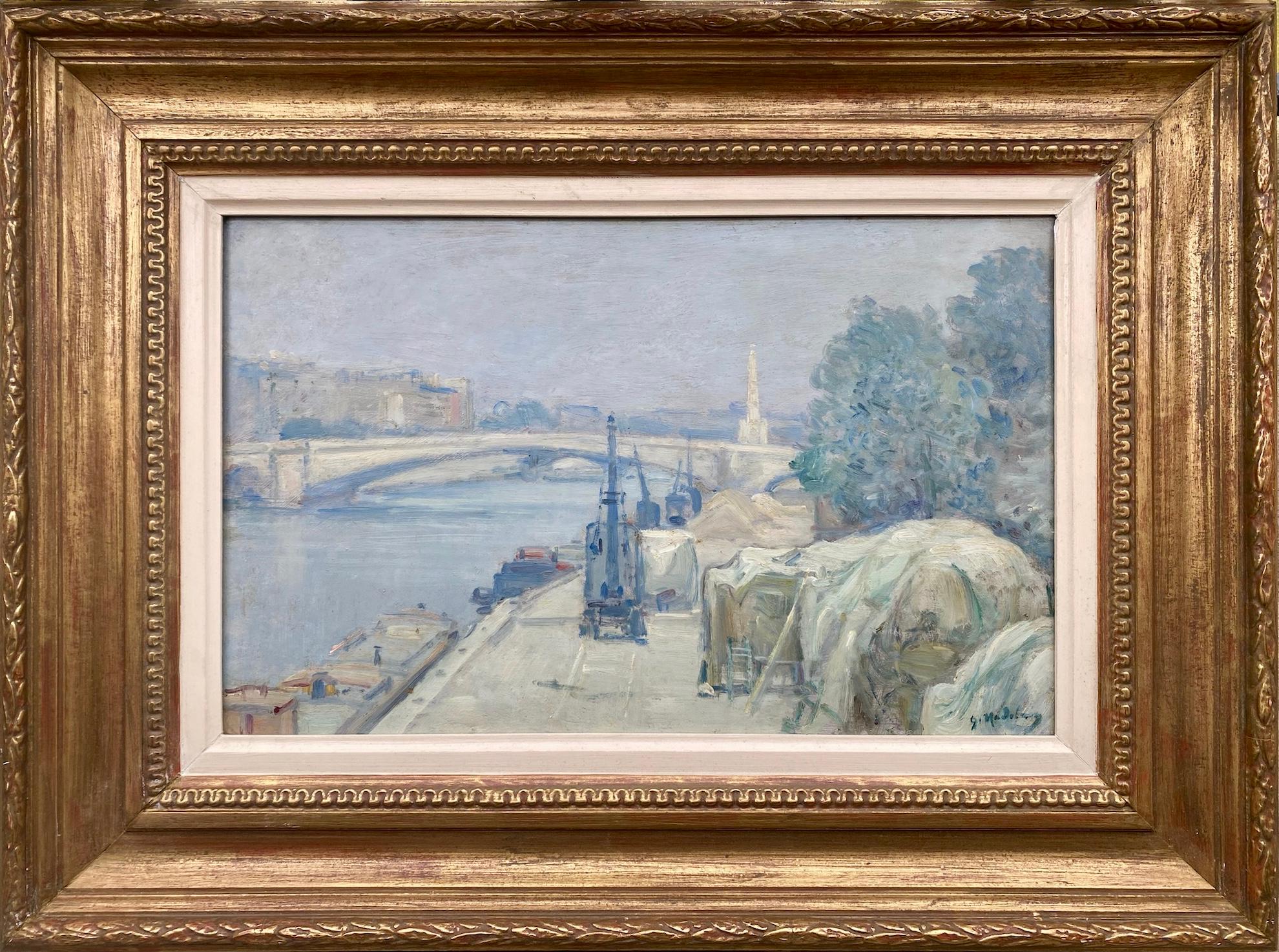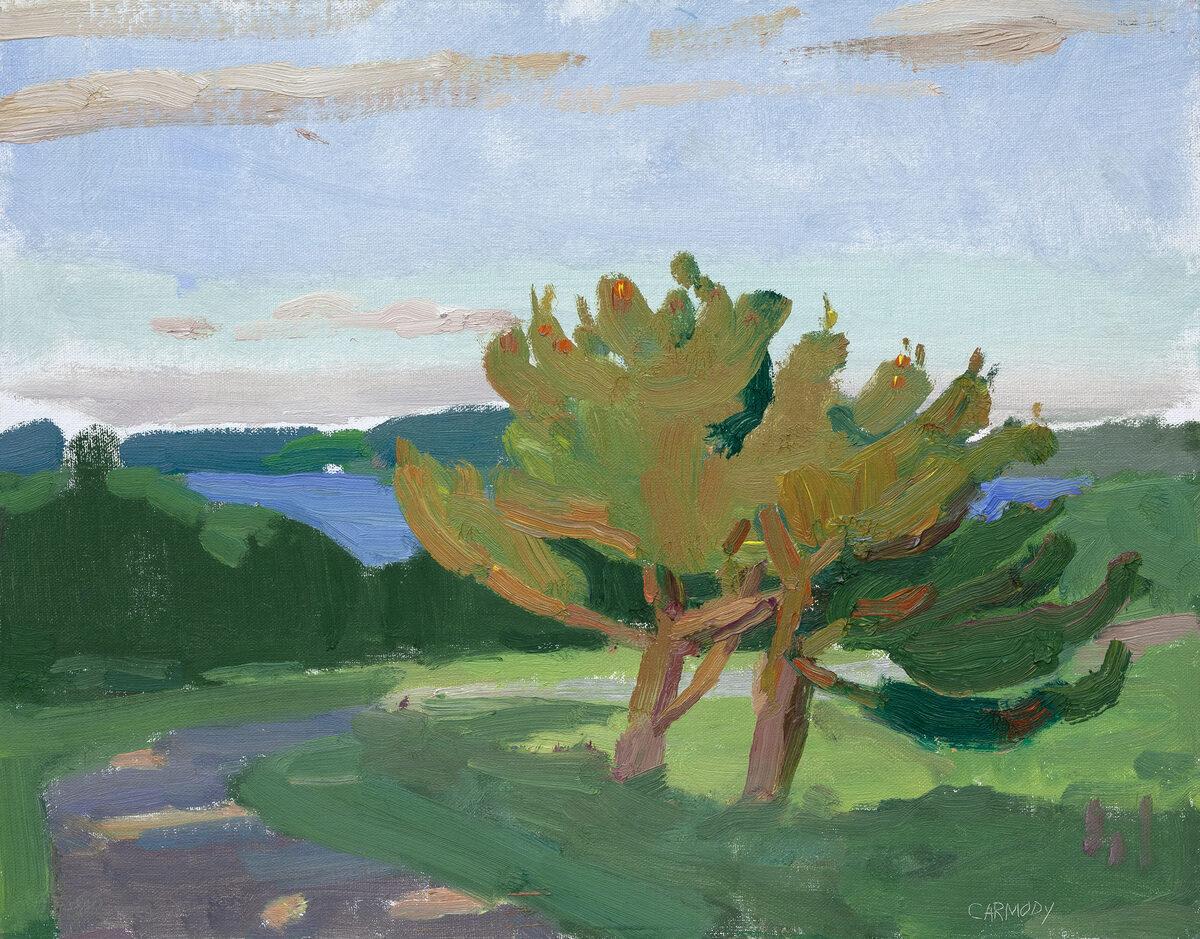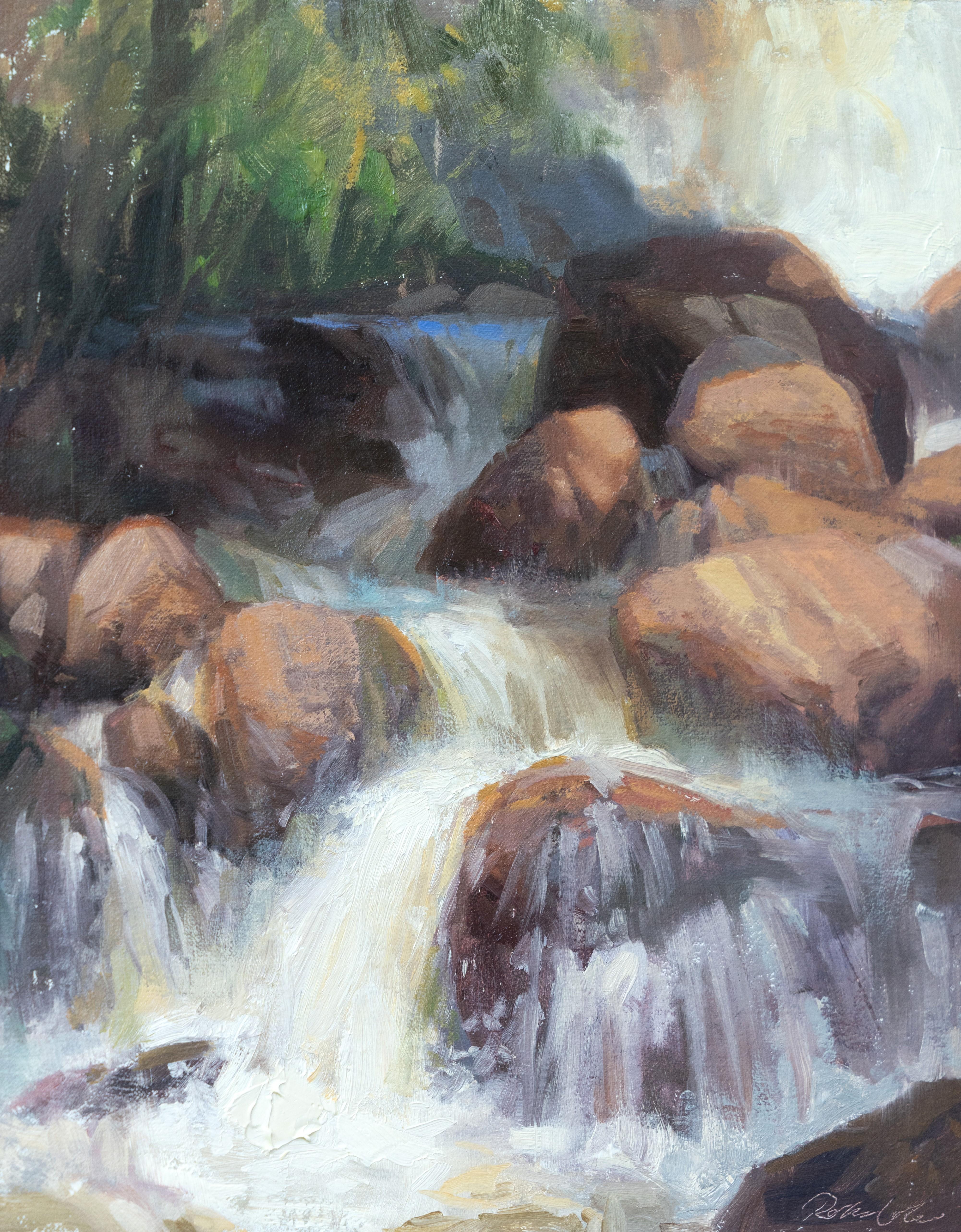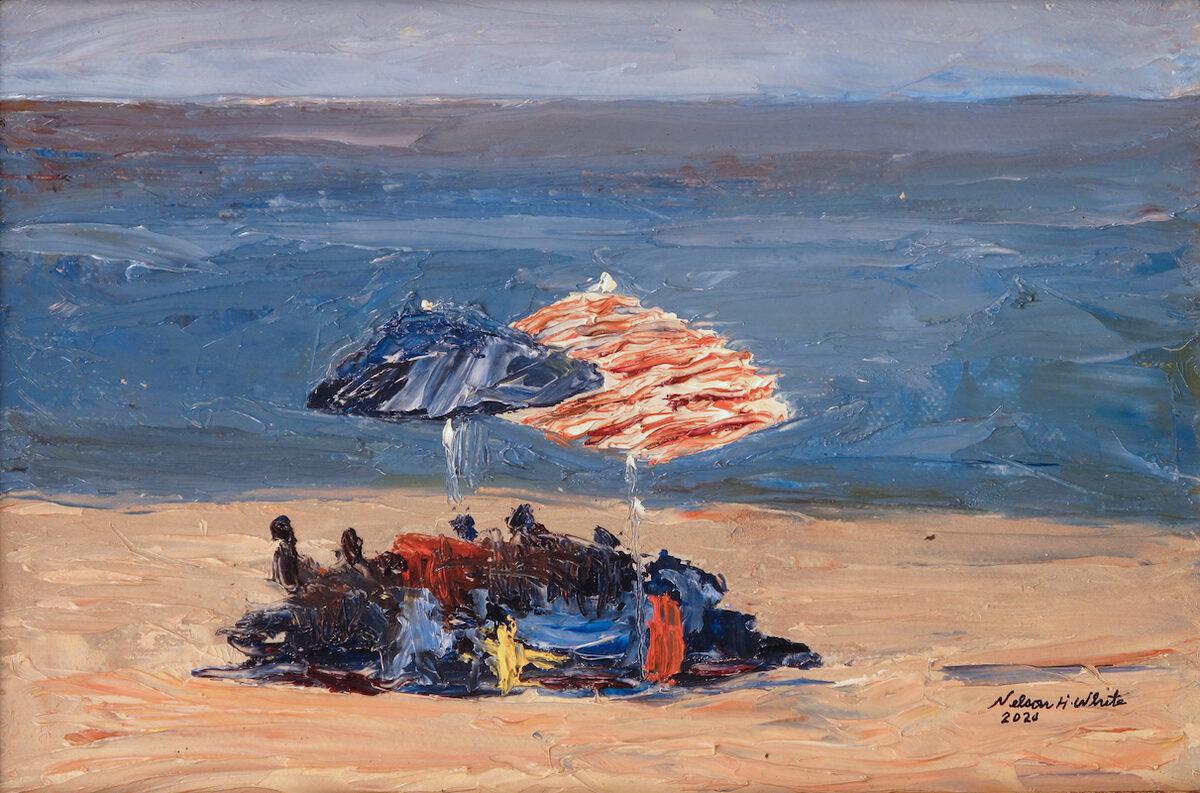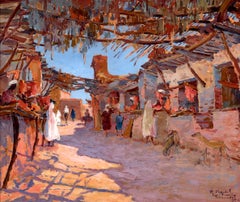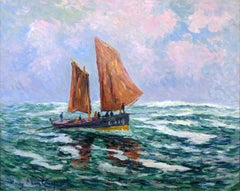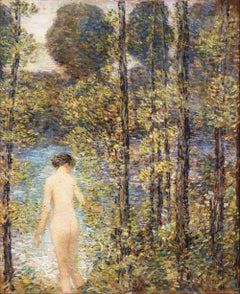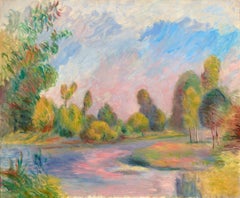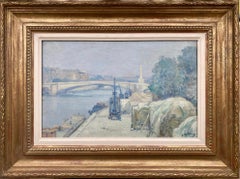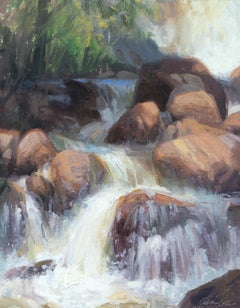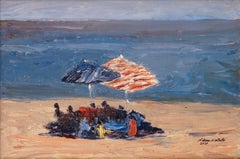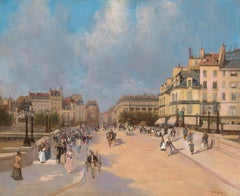
Pont Neuf By Raymond Allègre
View Similar Items
Want more images or videos?
Request additional images or videos from the seller
1 of 10
Raymond Allègre Pont Neuf By Raymond AllègreCirca late 19th century
Circa late 19th century
$38,500List Price
About the Item
- Creator:Raymond Allègre (1857 - 1933)
- Creation Year:Circa late 19th century
- Dimensions:Height: 32.38 in (82.25 cm)Width: 37.75 in (95.89 cm)Depth: 3.5 in (8.89 cm)
- Medium:
- Movement & Style:
- Period:
- Condition:
- Gallery Location:New Orleans, LA
- Reference Number:Seller: 31-88671stDibs: LU18614383532
About the Seller
5.0
Vetted Professional Seller
Every seller passes strict standards for authenticity and reliability
Established in 1912
1stDibs seller since 2013
17 sales on 1stDibs
Typical response time: 10 hours
Authenticity Guarantee
In the unlikely event there’s an issue with an item’s authenticity, contact us within 1 year for a full refund. DetailsMoney-Back Guarantee
If your item is not as described, is damaged in transit, or does not arrive, contact us within 7 days for a full refund. Details24-Hour Cancellation
You have a 24-hour grace period in which to reconsider your purchase, with no questions asked.Vetted Professional Sellers
Our world-class sellers must adhere to strict standards for service and quality, maintaining the integrity of our listings.Price-Match Guarantee
If you find that a seller listed the same item for a lower price elsewhere, we’ll match it.Trusted Global Delivery
Our best-in-class carrier network provides specialized shipping options worldwide, including custom delivery.More From This Seller
View AllTaroudant
Located in New Orleans, LA
Signed, inscribed and dated "R. Pinatel / Taroudant / 1926" (lower right)
Oil on panel
A stunning ode to the Moroccan landscape, this oil on panel was composed by the French Orientalist painter Raphaël Pinatel, whose lively works adeptly translated the romanticism of the East for a Western audience. The present work, which captures a market in Taroudant, a city in southeastern Morocco, exemplifies the artist’s distinctive approach as he brilliantly translates the energy and atmosphere of the desert city. Pinatel’s style is impressionistic in his brushwork and handling of light and atmosphere. In the present work, he brilliantly captures the effects of the direct desert sun...
Category
Early 20th Century Impressionist Landscape Paintings
Materials
Oil, Panel
Barque De Peche En Mer By Henry Moret
By Henry Moret
Located in New Orleans, LA
Henry Moret
1856-1913 French
Barque de Peche en Mer
Fishing Boat at Sea
Signed and dated “Henry Moret 1912” (lower left)
Oil on canvas
A beautiful gestural composition imbued with the sublime beauty of the open sea, this oil on canvas by Impressionist Henry Moret showcases the artist's deft use of color and texture. One of the most celebrated painters of the Pont-Aven School, Moret’s lasting reputation is tied to his talent for capturing the bright skies, lively waterways and the diverse coastline of northern France. With a mastery of plein air composition and a deep appreciation for the natural world, Moret's Barque de Peche en Mer renders a fishing boat navigating through the ocean. Moret creates a visceral sense of the vitality of the water and the enormity of the open skies. The artist captures the vigorous energy of the sea with a profusion of green and blue hues applied with a thick impasto. Small yet mighty against the infinite backdrop, Moret's fishing boat forges ahead.
Henry Moret was born in Cherbourg in 1856, though little else is known about his early life. He entered military service as a young man in 1875, and it was during that period when Moret discovered the beauty of France’s northern coasts, particularly those of Normandy and Brittany. After his tour ended, he embarked on his artistic career, completing his formal education at the École Nationale des Beaux-Arts under Jean-Leon Gérôme, and later, from about 1880, under Jean-Paul Laurens at the Académie Julian.
He exhibited for the first time at the Paris Salon in 1880, submitting a landscape of the coast of Brittany. During his time in Paris, he frequently traveled to Brittany to paint the region he so loved. In 1888, he more firmly established himself in Pont-Aven, a town whose center had become an artistic refuge for artists such as the great Paul Gauguin, Ernest Ponthier de Chamaillard, Emile Jourdan and others. Under Gauguin's influence, he briefly explored the concept of Symbolism in his works, but after Gauguin left Pont-Aven in 1891, Moret returned to his Impressionist roots. He formed a relationship with the famed dealer Durand-Ruel in 1895, and his career was officially launched. Today, his works can be found in important museums including the Manchester Art Gallery, the State Hermitage Museum (St. Petersburg), the National Gallery of Art (Washington DC) and others.
Dated 1912
Canvas: 28 3/4” high x 36 3/4” wide
Frame: 36 5/8" high x 44 1/8" wide
Exhibited:Henry Moret, Galerie Durand-Ruel, April 5-January 29, 1966, n° 47
Provenance:
Sale Marcel Bernheim...
Category
20th Century Impressionist Landscape Paintings
Materials
Canvas, Oil
The Bather by Childe Hassam
By Childe Hassam
Located in New Orleans, LA
Childe Hassam
1859-1935 American
The Bather
Signed and dated “Childe Hassam” (lower right)
Oil on canvas
Considered by many to be America’s foremost Impressionist painter, Childe Hassam composed his tranquil and intimate oil on canvas The Bather in the early years of the 20th century. The creation of the artwork aligns with a period of Hassam’s career where the artist’s palette was transforming, matching ever closer with the pale and pastel hues of French Impressionists like Claude Monet. Even the subject — a nude woman — represents a greater alignment with the Impressionist project, as artists of the movement and their non-mythological and non-biblical nudes still generated cries of indecency. With Hassam’s signature brushwork and attention to color, The Bather serves as a dream-like vision, serene and sensuous, of a young woman bathing in a lush forest.
While the artist's skill for landscape painting is on display, it is Hassam's command of form, light and color that brings this canvas to life. He creates a captivating composition, placing the nude subject in the bottom left of the canvas. The soft, undulating curves of the woman's body in contrapposto and the glow of her fair skin are balanced by the strong verticals and deep earth tones of the tall trees to her right. Hassam delicately frames the nude in the vivid blues of the distant water, building luminous color that further draws the viewer’s eye and results in a somewhat voyeuristic appeal — endowing his nude with both a natural innocence and an intentional sensuality.
Born in Dorchester, Massachusetts, Childe Hassam began his artistic career as a freelance illustrator, working for national publications such as Harper’s Weekly, Scribner’s Monthly, and The Century. His first solo exhibition of watercolors took place in Boston in 1883, and he quickly catapulted onto the international scene, winning a bronze medal at the Exposition Universelle in Paris in 1889. The year before the present work was created, he received the Webb Prize from the Society of American Artists for another landscape painted at Gloucester. Hassam would receive numerous other awards throughout his career, most notably the Gold Medal for Distinguished Services to Fine Art from the American Dealers Association. A true master, Hassam depicted a way of life characteristic of both American and French society, and his work elucidates a critical chapter in American art history. Today, his work resides in the Oval Office of the White House and in numerous important museums, including the Metropolitan Museum of Art in New York, the National Gallery of Art in Washington, DC and the Museum of Fine Arts in Boston, among others.
This painting will be included in Stuart P. Feld's and Kathleen M. Burnside's forthcoming catalogue raisonné of the artist's work.
Circa 1905
Canvas: 24 1/2“ high x 20 18” wide
Frame: 35 7/8“ high x 31 1/4” wide x 3 1/4“ deep
Provenance:
Private Collection of William Young...
Category
20th Century Impressionist Nude Paintings
Materials
Canvas, Oil
Au Bord De La Rivière By Pierre-Auguste Renoir
By Pierre-Auguste Renoir
Located in New Orleans, LA
Pierre-Auguste Renoir
1841-1919 French
Au bord de la rivière
(Along the River)
Oil on canvas
"Renoir may be the only great painter who has never painted a sad picture."
- Octave ...
Category
19th Century Impressionist Landscape Paintings
Materials
Canvas, Oil
La Terrasse Devant La Mer By Jean Pierre Cassigneul
Located in New Orleans, LA
Jean-Pierre Cassigneul
b.1935 French
La terrasse devant la mer
(The Terrace by the Sea)
Signed “Cassigneul” (lower left)
Oil on canvas laid on panel
This monumental, three-panele...
Category
20th Century Post-Impressionist Figurative Paintings
Materials
Canvas, Oil, Panel
Football by Fedor Ivanovich Zakharov
By Fedor Zakharov (b.1882)
Located in New Orleans, LA
Signed in Cyrillic "F. Zakharov" (lower right) and signed again and inscribed "Fedor Zakharov/Football" (on reverse)
Oil on card laid down on panel
Undoubtedly, football, or socc...
Category
1910s Landscape Paintings
Materials
Oil, Panel, Cardboard
You May Also Like
Impressionist Cityscape Paris, works by the River Seine light flooded painting
By Gustave Madelain
Located in Norwich, GB
I try not to buy too many views of Paris, as I am aware that not all of you are as attached to the the city as I am. However, this bright, dynamic and fun view of the Seine and its b...
Category
1920s Impressionist Landscape Paintings
Materials
Mahogany, Oil, Wood Panel
"June Evening" oil painting, sunlit landscape with tree, a view of water, framed
By Kelly Carmody
Located in Sag Harbor, NY
An oil painting of two trees basking in the summer's golden sun. The sea can be seen in the distance, just beneath the horizon. The sky is a soft blue with a streak of grey clouds.
...
Category
21st Century and Contemporary American Impressionist Landscape Paintings
Materials
Oil, Panel
"Eldorado Canyon Falls" Original Oil Painting on Panel, Colorado waterfall
By Robin Cole
Located in Denver, CO
Robin Cole’s “Eldorado Canyon Falls” is a compelling 2024 oil on panel piece that depicts a waterfall in colorful Colorado.
The painting embodies a tranquil scene, where the beauty...
Category
2010s Impressionist Landscape Paintings
Materials
Oil, Panel
"Coopers Beach, Southampton 07.25.20" impressionist, landscape of beach, LI
By Nelson White
Located in Sag Harbor, NY
Lifelong painter Nelson H. White (b. 1932, Connecticut) is widely appreciated for his loyalty to natural landscapes and intimate impressionism. His loose brushstrokes are skillfully ...
Category
21st Century and Contemporary Impressionist Landscape Paintings
Materials
Oil, Panel
"Pine Creek in September", Bogomir Bogdanovic, Oil on Board, Landscape, 30x39
By Bogomir Bogdanovic
Located in Dallas, TX
This original oil painting from Bogomir Bogdanovic is a perfect representation of his paintings that he is most known for of upstate New york Landscapes. In this original oil painting the water of Pine Creek in New Jersey is rushing down stream through bushels of pink and yellow flowers . The piece was painted in 1993 and is entitled "Pine Creek in September VIII" and is available for $14,500.
Bogdanovic’s work consists of varied subjects, primarily of breathtaking landscapes dotted with people from New York City, Warwick, and neighboring Sussex County...
Category
1990s Impressionist Landscape Paintings
Materials
Panel, Oil
"Sunset in Allegheny", Bogomir Bogdanovic, Oil on Board, Landscape, 30x40 in.
By Bogomir Bogdanovic
Located in Dallas, TX
This original oil painting from Bogomir Bogdanovic is a perfect representation of his paintings that he is most known for of landscapes in upstate Pennsylvania. In this original oil painting the sun is setting on the snowy mountains in Allegheny Pennsylvania. The piece was painted in 1996 and is entitled "Sunset in Allegheny" and is available for $14,500.
Bogdanovic’s work consists of varied subjects, primarily of breathtaking landscapes dotted with people from New York City, Warwick, and neighboring Sussex...
Category
1990s Impressionist Landscape Paintings
Materials
Panel, Oil
Recently Viewed
View AllMore Ways To Browse
Antique Olive Color
19th Century Paris Street Scene
New Orleans Street Scene Paintings
Antique Restaurant Signs
Pont Neuf Paris
Maritime Antiques
Rau Antique
Bouche Frame
French Normandy Antiques
Le Pont Neuf
Rouen France Antiques
Jean Baptiste Olive
Lauren Lyons
Mexican Art 1920s
Mexico Art 1920s
Pasture Painting
Virginia Landscape Oil Painting
17th Century Italian Landscape
